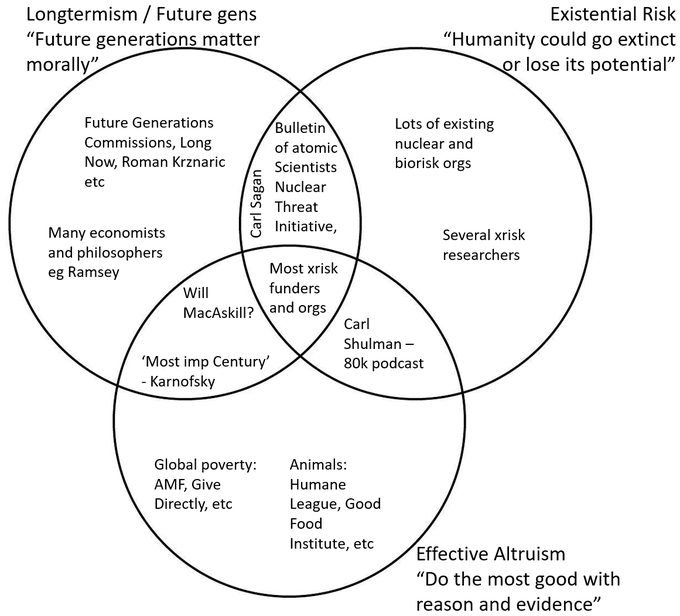Hide table of contents
8
0
0
Reactions
0
0
New Answer
New Comment
2 Answers sorted by
Relevant, by @HaydnBelfield:

There is ambiguity in the terminology here. So here is how I visualize it with my own terminology. Its not a Venn diagram but this is how I see it.

I interpret this as using different discount rates (specifically, pure time preference, to distinguish from discounting for marginal utility or exogenous extinction risk). Is that right? That is, temporal radicalists have pure time preference = 0, while the others have pure time preference > 0.
Or do you mean something else by "how long into the future you're willing to look"?
1
Venkatesh
I do not think its about discount rates. I was recently corrected on this point here. It looks like conservatives and moderates thinking closer to the present have other better reasons like population axiologies or tractability concerns or something along those lines.
1
Michael_Wiebe
In that case, "how long into the future you're willing to look" doesn't seem to capture what's going on, since 'neartermists' are equally willing to look into the future.
